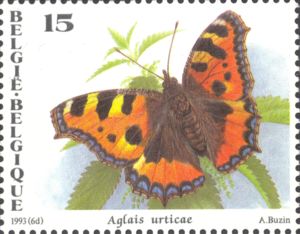Fears are growing for the small tortoiseshell butterfly Aglais urticae after this once-common garden insect continued its baffling decline despite the hot summer proving a boon to most species. The small tortoiseshell suffered its worst summer in the history of the Big Butterfly Count with sightings falling by 32% compared with last year, according to the charity Butterfly Conservation. The hot, dry weather is believed to have boosted many of Britain’s 59 native butterfly species this summer as a record 100,000 people spotted nearly one million butterflies during the three-week count, the world’s largest butterfly survey. Most common was the small white, with numbers up 161% on the previous year, while the large white came second, up 104%. The three “cabbage whites” – the large white, small white and green-veined white – made up 55% of the total butterflies recorded. “It was definitely a white summer and the blues did really well too,” said Richard Fox of Butterfly Conservation. “We suspect it was a good summer for most species.”
After fears over the decline of the common blue, this small butterfly bounced back with its best results since 2010, while the commonest blue butterfly seen in gardens, the holly blue, recorded its highest ever numbers in the count’s history.
The small tortoiseshell’s decline is not following a typical insect boom-and-bust cycle, however, with the population of this once-ubiquitous species falling by 75% since 1976. Its decline is a particular puzzle, according to Fox, because its caterpillar’s foodplant, the stinging nettle, is almost certainly more widespread in Britain than at any point in history. The nettle thrives on nitrate-rich land caused by vehicle emissions and farm fertilisers. Studies show that the small tortoiseshell caterpillars thrive on nitrate-rich nettles as well.
Fox said: “We know a lot about the decline of rare specialist species in Britain but the once-common ‘wider countryside’ species such as small tortoiseshell, gatekeeper and small skipper are undergoing big declines which we don’t understand. It might be to do with climate change or general land management such as pesticide use. “If that rate of decline continues then the small tortoiseshell may become a threatened species. How our wider countryside species are faring is very much one of Butterfly Conservation’s priorities, and the Big Butterfly Count is really useful in providing data about them.”
Source
The Guardian, 24 September 2018
https://www.theguardian.com/environment/2018/sep/24/small-tortoiseshell…

- Login om te reageren
